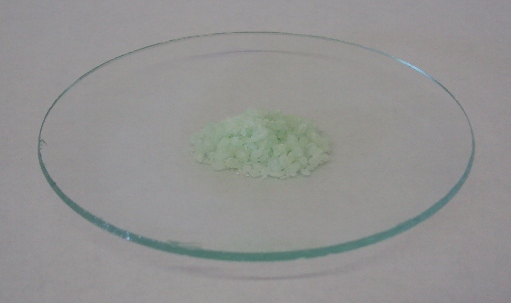Double Salt on:
[Wikipedia]
[Google]
[Amazon]
 A double salt is a
A double salt is a
salt
In common usage, salt is a mineral composed primarily of sodium chloride (NaCl). When used in food, especially in granulated form, it is more formally called table salt. In the form of a natural crystalline mineral, salt is also known as r ...
that contains two or more different cations
An ion () is an atom or molecule with a net electrical charge. The charge of an electron is considered to be negative by convention and this charge is equal and opposite to the charge of a proton, which is considered to be positive by convent ...
or anions
An ion () is an atom or molecule with a net electrical charge. The charge of an electron is considered to be negative by convention and this charge is equal and opposite to the charge of a proton, which is considered to be positive by convent ...
. Examples of double salts include alum
An alum () is a type of chemical compound, usually a hydrated double salt, double sulfate salt (chemistry), salt of aluminium with the general chemical formula, formula , such that is a valence (chemistry), monovalent cation such as potassium ...
s (with the general formula ) and Tutton's salts (with the general formula ). Other examples include potassium sodium tartrate
Potassium sodium tartrate tetrahydrate, also known as Rochelle salt, is a double salt of tartaric acid first prepared (in about 1675) by an apothecary, , of La Rochelle, France. Potassium sodium tartrate and monopotassium phosphate were the fi ...
, ammonium iron(II) sulfate (Mohr's salt), potassium uranyl sulfate (used to discover radioactivity) and bromlite . The fluorocarbonate
A carbonate fluoride, fluoride carbonate, fluorocarbonate or fluocarbonate is a double salt containing both carbonate and fluoride. The salts are usually insoluble in water, and can have more than one kind of metal cation to make more complex comp ...
s contain fluoride and carbonate anions. Many coordination complex
A coordination complex is a chemical compound consisting of a central atom or ion, which is usually metallic and is called the ''coordination centre'', and a surrounding array of chemical bond, bound molecules or ions, that are in turn known as ' ...
es form double salts.
Double salts should not be confused with complexes. Double salts only exist in the solid. When dissolved in water, a double salt acts as a mixture of the two separate salts: it completely dissociates into simple ions while a hexaaquo complex does not; the complex ion remains unchanged. Similarly, potassium hexaiodoytterbate(II) is a complex salt and contains the discrete hexaiodoytterbate(II) ion , which remains intact in aqueous solution
An aqueous solution is a solution in which the solvent is water. It is mostly shown in chemical equations by appending (aq) to the relevant chemical formula. For example, a solution of table salt, also known as sodium chloride (NaCl), in water ...
s. In many cases, the complex ion is indicated by square brackets " . Double salts are distinct from mixed-crystal systems where two salts cocrystallise; the former involves a chemical combination with fixed composition, whereas the latter is a mixture.
In general, the properties of the double salt formed will not be the same as the properties of its component single salts.
Gallery
References
* {{salt-stub